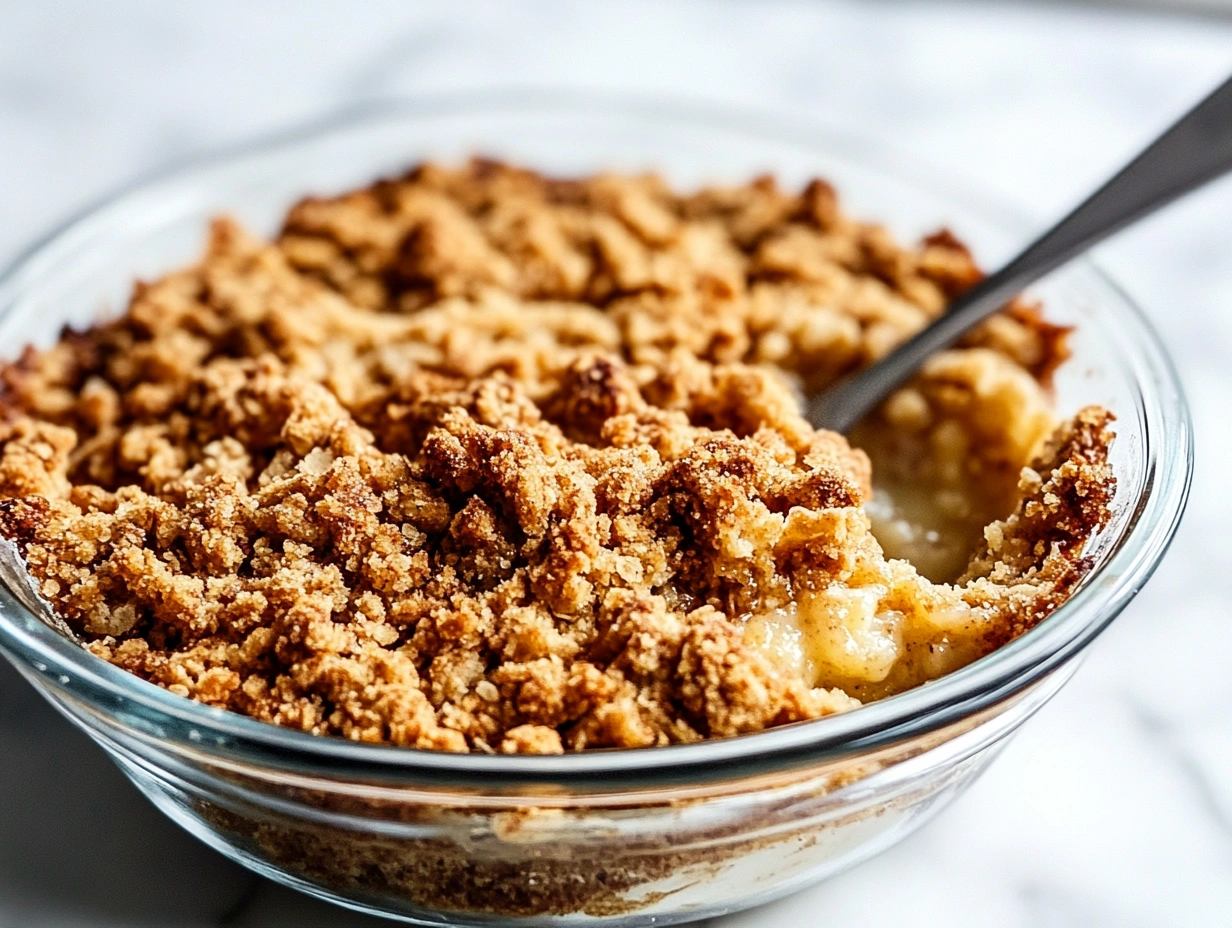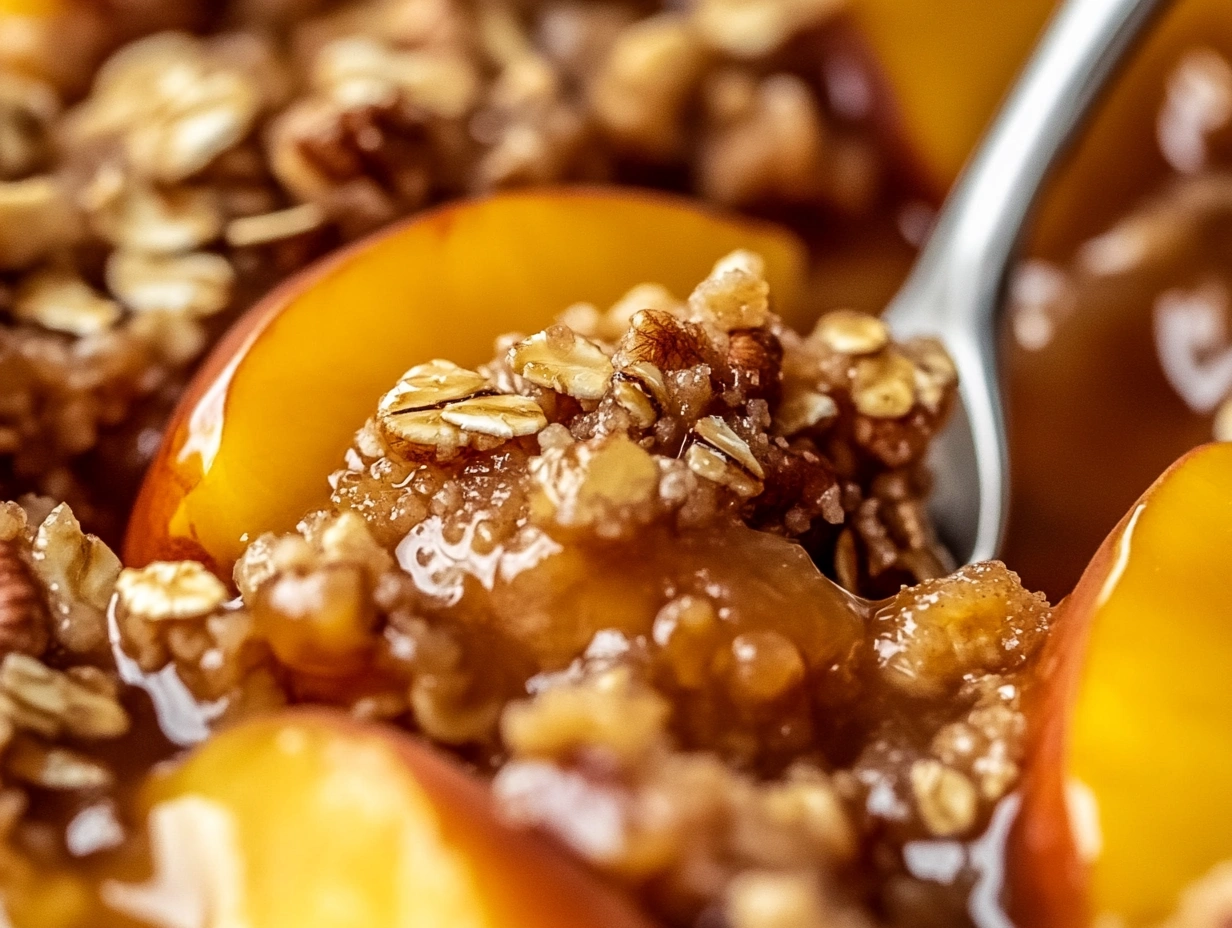Introduction to What Is the Secret to Good Crumble
Few desserts evoke a sense of home and comfort like a well-made crumble. Whether it’s the crisp topping or the gooey fruit beneath, crumble is a dessert loved by generations worldwide. Its simplicity and versatility make it a staple for both beginner and seasoned bakers. But what truly sets a good crumble apart? It comes down to mastering the balance between textures, flavors, and layers.
When exploring what is the secret to good crumble, understanding key principles can significantly improve the dessert’s flavor and presentation. By carefully balancing layers, toppings, and fillings, you can elevate this timeless treat into a show-stopping creation.
What Is the Secret to Good Crumble Layers
The foundation of any crumble is its layers. Achieving the perfect balance between the fruit filling and the crumble topping is essential to ensure every bite is as satisfying as the last.
The Art of Balancing Filling and Topping
The ideal crumble features a roughly 2:1 ratio of filling to topping. This ensures that the dessert is neither too heavy nor too crumbly. A common mistake is overloading the topping, which can overpower the fruit and disrupt the harmony of the dish.
As described in detailed guides like the Peach Crumble Recipe, maintaining an appropriate balance between the filling and topping is one of the answers to what is the secret to good crumble.
Key Tips for Layering:
- Choose the Right Dish: Use a shallow baking dish to ensure the layers cook evenly.
- Distribute Evenly: Spread the fruit filling evenly across the base before adding the topping.
- Compact Without Pressing: Lightly pat down the topping to create a cohesive layer without compressing it completely.
What Is the Secret to Good Crumble Toppings
A crumble’s topping is what gives it its signature texture and flavor. The perfect topping is golden, crisp, and slightly sweet, with just the right amount of richness. Achieving this balance is an essential part of what is the secret to good crumble, as the topping must complement the filling without overpowering it. For those aiming to master what is the secret to good crumble, the topping’s preparation is a crucial step that cannot be overlooked.
Ingredients That Matter
At its core, a classic crumble topping consists of butter, flour, and sugar. However, this basic trio can be enhanced with additional ingredients to refine its flavor and texture.
As seen in resources like Difference Between Peach Crumble and Peach Crisp, adding elements like oats or nuts can further answer the question of what is the secret to good crumble.
- Butter: Provides richness and helps bind the ingredients.
- Flour: Acts as the base and gives the topping structure.
- Sugar: Balances the tartness of the fruit and caramelizes during baking.
Additions to Boost Flavor
Incorporating oats, nuts, or spices can add depth and variety to your crumble:
- Oats: Add chewiness and a rustic charm.
- Nuts: Almonds, pecans, or hazelnuts introduce a satisfying crunch.
- Spices: A dash of cinnamon, nutmeg, or cardamom enhances the overall warmth of the dessert.
Pro Tip: Mix the topping ingredients lightly with your hands until they form small clumps. Avoid overmixing, as this can lead to a dense topping.
What Is the Secret to Good Crumble Filling
The fruit filling is the heart of any crumble, playing a pivotal role in determining the dessert’s overall flavor, moisture, and visual appeal. A well-prepared filling harmonizes sweetness and acidity, creating a balanced base that complements the crisp topping perfectly. Selecting fruits that provide the right combination of texture and juiciness is essential.
The key to a successful filling lies in achieving the ideal balance of sweetness, acidity, and texture. Tart fruits like Granny Smith apples or rhubarb add a pleasant tang, while sweeter options like peaches or berries contribute natural sugar that enhances the dessert’s flavor profile. Adding a splash of lemon juice can further brighten the taste and prevent overly sweet fillings from becoming cloying.
To avoid sogginess, a light dusting of cornstarch or tapioca flour can help thicken the filling, ensuring the fruit juices create a luscious base rather than a watery one. Mixing in spices like cinnamon, nutmeg, or ginger adds depth and warmth, making the filling truly irresistible.
Understanding what is the secret to good crumble includes mastering the art of a perfectly balanced fruit filling that elevates the dessert from good to unforgettable.
Choosing the Right Fruits
While crumbles can be made with a variety of fruits, not all are created equal when it comes to this dessert. The best options are those that soften during baking without becoming mushy. Popular choices include:
- Apples: Firm and slightly tart, they hold their shape well.
- Berries: Blueberries, raspberries, and blackberries add a vibrant color and natural sweetness.
- Stone Fruits: Peaches, plums, and cherries lend juiciness and a luscious texture.
Recipes such as the Peach Crumble Recipe highlight how the choice of fruit directly answers what is the secret to good crumble.
Preparing the Fruit
Proper preparation is crucial to ensure the fruit cooks evenly and doesn’t release too much liquid:
- Slice Uniformly: Cut fruits into even pieces to promote even cooking.
- Add a Thickener: Sprinkle the fruit with a bit of cornstarch or flour to prevent a watery filling.
- Balance the Flavors: A touch of lemon juice or zest can brighten the flavors, while sugar can be adjusted based on the fruit’s natural sweetness.
The Role of Sweetness and Acidity
Sweetness and acidity should complement each other in the filling. For example:
- Pair tart apples with brown sugar and cinnamon for warmth.
- Balance sweet peaches with a hint of lemon juice to enhance their flavor.
Using these techniques ensures that each fruit choice contributes to the overall harmony, answering the common query of what is the secret to good crumble.

What Is the Secret to Good Crumble Texture
Achieving the ideal texture is one of the defining aspects of what is the secret to good crumble. The perfect crumble strikes a delicate balance between a crunchy, golden topping and a soft, gooey filling, creating a dessert that is both satisfying and indulgent. A topping that crumbles beautifully while retaining its structure adds to the dessert’s charm, while the filling should be tender without becoming watery.
Understanding what is the secret to good crumble requires attention to detail when combining ingredients. For the topping, using cold butter and gently mixing the ingredients prevents it from becoming overly dense, ensuring the desired crunch. Meanwhile, the fruit filling’s consistency plays a vital role in maintaining textural harmony, as it should be juicy but not runny.
From pre-baking the topping to carefully layering the fruit, every step contributes to the ultimate goal of achieving what is the secret to good crumble, a dessert with an impeccable texture that keeps everyone coming back for seconds.
Techniques for Achieving the Right Mix of Crunch and Crumble
The crumble topping should be light yet crispy, and it should hold together without becoming overly dense or powdery. To get this balance:
- Cold Butter is Key: Keeping butter cold during mixing helps create a flaky texture as it melts during baking.
- Light Mixing: Overworking the dough will cause the topping to lose its airy consistency.
Double-Baking for a Superior Texture
Double-baking involves pre-baking the crumble topping separately from the fruit filling. This technique:
- Creates an extra layer of crispness in the topping.
- Prevents the topping from becoming soggy due to the moisture in the fruit filling.
Pre-baking methods like these are highlighted in adaptations such as the Peach Crumble Recipe, which emphasizes the value of texture balance in every bite.
Hand-Mixing vs. Food Processor
Using your hands to mix the topping allows you to feel when the mixture reaches the perfect crumbly consistency. However, a food processor offers speed and uniformity for larger batches.
- Hand Mixing: Ideal for small batches; gives better control over the texture.
- Food Processor: Great for consistency but requires care to avoid overmixing.
What Is the Secret to Good Crumble Baking
Even the perfect layers and textures can fail without proper baking techniques. Let’s uncover what is the secret to good crumble baking to get consistently great results.
The Ideal Oven Temperature and Timing
The sweet spot for baking a crumble is usually 350°F (175°C) to 375°F (190°C). This allows the filling to bubble and soften while the topping achieves a golden crust.
Key Tips for Baking:
- Preheat the Oven: An even starting temperature ensures the crumble cooks uniformly.
- Baking Time: Most crumbles bake for 35–45 minutes, depending on the depth of the dish.
Avoiding Common Mistakes
Mistakes during baking can ruin an otherwise well-prepared crumble. Here’s how to avoid them:
- Soggy Topping: Prevent this by using the double-baking technique or adding a layer of flour to the fruit base.
- Uneven Cooking: Rotate the dish halfway through baking to prevent hot spots.
What Is the Secret to Good Crumble Variations
One of the most delightful things about crumbles is their flexibility. Adding your personal twist allows you to tailor the dessert to any taste or occasion.
Adding a Personal Twist
To create a unique crumble, consider incorporating:
- Spices: Try a hint of cardamom or ginger for a warm, aromatic flavor.
- Zests: Lemon or orange zest can brighten the overall taste.
- Nuts or Seeds: Walnuts, almonds, or sunflower seeds bring crunch and depth.
Gluten-Free and Vegan Adaptations
Adaptations can accommodate dietary restrictions while maintaining quality:
- Gluten-Free: Use almond flour or a gluten-free flour blend for the topping.
- Vegan: Replace butter with coconut oil or a vegan butter substitute.
Exploring Savory Crumble Options
Crumbles don’t have to be sweet! Savory versions use ingredients like cheese, herbs, and vegetables:
- Savory Filling Ideas: Try roasted tomatoes, zucchini, or mushrooms.
- Savory Topping Options: Combine breadcrumbs, grated cheese, and olive oil.
What Is the Secret to Good Crumble with Seasonal Fruits
Using fruits at their peak ensures the best flavor, making seasonal choices one of the secrets to what is the secret to good crumbles.
The Best Fruits for Each Season
Seasonal fruit choices can elevate a crumble:
- Summer: Berries, peaches, and plums.
- Fall: Apples, pears, and cranberries.
- Winter: Citrus fruits combined with spiced toppings.
- Spring: Rhubarb, cherries, and early strawberries.
Resources like The Difference Between Peach Crumble and Peach Crisp showcase how seasonal fruits can alter the taste and presentation of the dessert.
How to Use Frozen Fruits Without Losing Quality
Frozen fruits are a convenient option but can release excess liquid during baking. To avoid this:
- Thaw and Drain: Let the fruits thaw completely and drain any excess moisture.
- Add a Thickener: Sprinkle the fruits with cornstarch or flour before layering them in the dish.



1 thought on “What is the Secret to Good Crumble?”